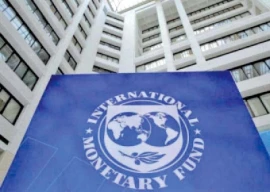
There are several routes that a company can take if it is bankrupt, on the verge of bankruptcy, or feels that it may become insolvent. Many sensible companies opt for this not as an escape route but as a means of pulling off – what often seems to be unlikely – a rescue act.
What is bankruptcy?
Bankruptcy is a form of reorganisation or restructuring or liquidation under the guidance of federal law.
Bankruptcy laws cover both companies and individuals – and both can file for bankruptcy – although there are major differences. I basically want to talk about corporate bankruptcy here.
The two most common types of corporate bankruptcy are Chapter 11 and Chapter 7. In both cases, let there be no doubt that the company is in a state where it is no longer able to continue as a viable business.
The overwhelming cause
In very simple words, overwhelming debt is usually the primary cause. The companies owe more than they are worth. In some cases the companies cannot even afford to pay for daily running expenses.
At times companies are forced into taking this route by a creditor, or the company can opt to go this way on its own, before it is completely destitute.
The options available
Chapter 11 bankruptcy is the first choice of most companies. The reason for this is that under this a company has the option of developing a restructuring plan that allows them to continue operations.
However, creditors and stockholders must approve the plan. Once the reorganisation is complete, the company can resume normal operations. This is only possible under a Chapter 11 filing.
The other option, which is usually a last resort, is Chapter 7, and is the case when a company has no hope of recovering and resuming normal operations. This entails liquidation of all assets to pay off creditors in a specific order. Banks and other lenders with secured loans are usually the first to get paid. Common stockholders are usually the last, if at all.
What are a stockholder’s options?
The first thing that happens when a company goes into reorganisation and the plan is approved is the suspension of all dividends to stockholders and premiums to bond owners.
The stock may continue to trade or – in rare cases – the company may buy back its shares from stockholders. This actually is the best possible thing that could happen for shareholders as this is about the only way they have a hope of getting anything on their investment.
In most cases the stock becomes worthless and also fails to meet the minimum requirements for listing on a stock exchange.
Buying stock in a company in Chapter 11
This might sound risky and quite unusual, but some investors actually look to buy companies that are in Chapter 11. They can pick up the stock for peanuts and if their projections about the company emerging from Chapter 11 are confirmed, they can make a killing.
Published in The Express Tribune, April 1st, 2013.
Like Business on Facebook to stay informed and join in the conversation.
COMMENTS (3)
Comments are moderated and generally will be posted if they are on-topic and not abusive.
For more information, please see our Comments FAQ

















There is no chapter 11 and chapter 7 in Pakistan. Looks like a copy paste job to me!
Wait a second, Chapter 7 & 11 both relate to US law.
Are you suggesting it is identical in Pakistan including the names?
Interesting, so what happens to the employees ? Do they get paid their past salaries which had been withheld ?